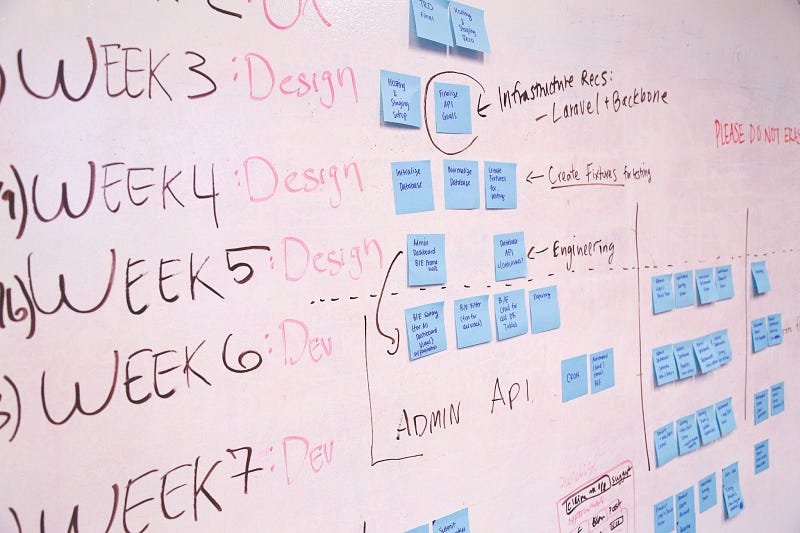As project management becomes somewhat of a buzzword in the realm of business, more and more businesses are catching onto the benefits of having a PMO (Project Management Office) to oversee their projects.
In fact, 97% of organizations believe in the benefits of project management and that it is an essential component of success — but despite this figure, most PMOs close within their first few years of operation.
So, why are these offices failing, and what are the characteristics of a successful PMO that lasts into the long term? This article will delve into the specifics, exploring exactly what constitutes a good PMO (and what doesn’t!)
Let’s get into it.
What is a PMO?
In the past, project management was largely the responsibility of the project manager. However, with the increasing complexity and size of projects, it became clear that a centralized organization was needed to support and guide project managers. The result was the creation of the Project Management Office (PMO).
The PMO is a centralized organization that provides project management support to projects and project managers. It typically has three core functions:
1. Establishing and enforcing standards for project management
2. Providing training and guidance for project managers
3. Acting as a repository of knowledge and best practices for project management.
The PMO can take many different forms, depending on the size and complexity of the organization. It can be a division within the organization, or it can be a separate unit.

PMOs are becoming increasingly important as organizations move to more agile methods of project management. The PMO is responsible for ensuring that projects are following the organization’s standards for agile project management.
What does the PMO do?
For those who are new to the concept, the exact role of the Project Management Office can seem a little convoluted. What is the PMO, really? What does it do?
The PMO is a centralized management function that provides guidance and support to project managers in order to ensure the success of their projects. In other words, it helps to ensure that projects are completed on time, within budget, and according to specifications.
The PMO accomplishes this by implementing standardized processes and procedures, providing training and resources to project managers, and monitoring the progress of projects. It also helps to resolve conflicts and ensure that all stakeholders are aligned with the project goals.
In order for a Project Management Office to be effective, it must have clearly defined goals and objectives, as well as a well-defined structure and operational procedures. It must also be staffed with qualified personnel who have the necessary skills and experience to support project managers.
The PMO can be an invaluable resource for project managers, but it is important to remember that it is not a substitute for good project management practices. The PMO can help to ensure the success of projects, but it cannot guarantee it.
Good and bad PMOs: what’s the difference?
There is a significant difference between effective and ineffective PMOs. An effective PMO can add great value to a project, while an ineffective PMO can actually detract from it. So, what makes a good Project Management Office?
It is well-organized
A good PMO exhibits excellent organizational skills. It is well-structured, and its processes are clearly documented. Staff are well-trained in their roles and responsibilities, and procedures are followed consistently.
A poor Project Management Office, on the other hand, can be chaotic and disorganized. Staff may not be properly trained, processes may not be well-defined, and procedures may not be followed consistently. This can lead to confusion and frustration among team members, and can ultimately have a negative impact on the project.

It provides valuable support to the project team
A good Project Management Office provides valuable support to the project team. It assists team members in meeting their objectives and helps them to stay on track and on schedule. The PMO also ensures that all team members are aware of their roles and responsibilities and that they are working together effectively towards the common goal.
An ineffective PMO can be a hindrance to the project team, however. It may not provide enough support, or it may provide too much support (thus interfering with team members’ independence). It may also be unresponsive to the needs of the team, or it may not be able to keep up with the demands of the project.
It has a good relationship with management
A good PMO has a good relationship with management. It works closely with management to understand their needs and expectations, and it provides regular updates on the status of the project. The Project Management Office also recommends changes or improvements to the project plan as needed, and provides suggestions for ways to optimize the team’s performance.
An ineffective PMO may have a poor relationship with management. It may be unresponsive to management’s needs, or it may not be able to keep up with the demands of the project. This can lead to frustration on the part of management, and may even cause them to lose faith in the PMO.
It has a good relationship with the team
A good PMO has a good relationship with the team. It works closely with the team to understand their needs and expectations, and it provides regular updates on the status of the project. The PMO also recommends changes or improvements to the project plan as needed, and provides suggestions for ways to optimize the team’s performance.
An ineffective PMO may have a poor relationship with the team. It may be unresponsive to team needs, or it may interfere with the team’s work. The PMO may also be slow to update the team on project status, and it may not provide suggestions for ways to improve the team’s performance.
The benefits of operating an effective PMO
A good PMO can help to improve the efficiency and effectiveness of a project-based organization. By providing clear structure, support, and guidance, the PMO can help projects run smoothly and on schedule. This can lead to improved communication and coordination between different teams, as well as reduced costs and fewer delays.

The benefits of a good PMO include:
- Improved project execution and delivery
- Increased organizational efficiency and effectiveness
- Better decision making due to improved information flow
- Optimized allocation of resources
- Reduced time to market for products and services
- Improved customer satisfaction
- Increased staff productivity and motivation
- Reduced project risk
Needless to say, making sure your PMO is running as effectively as possible is essential to your company’s success. Without proper project management, you cannot hope to run a tight ship!
Leading your PMO to success
To ensure that your PMO lines up with the characteristics of a ‘good’ PMO, take note of the following characteristics in order to guide your company to success.
There are a number of key factors that can make a PMO successful:
Clear Structure and Processes
A good PMO will have clear structure and processes in place, which will help to guide project managers and ensure that projects are managed effectively. This will include standard processes for initiating, planning, executing, monitoring, and closing projects.
The PMO should be structured in a way that allows it to fulfill its mandate. This may include:
- A clear reporting structure that allows the PMO to report up to the senior management team.
- Well-defined areas of responsibility, so that the PMO can focus on its core activities.
- The necessary skills and resources to carry out its work. This may include access to data and information, financial resources, and staff with the appropriate skills.
Strong Support from Senior Management
A good PMO will have strong support from senior management, who will be committed to its success and provide the necessary resources. The PMO must also be able to effectively communicate its goals and objectives to senior management.

Skilled Staff
To be most effective, a PMO should have skilled staff who are capable of managing projects effectively. This includes experienced project managers as well as analysts, administrators, and other support staff.
Robust Tools and Resources
Every PMO should have access to the latest tools and resources to help manage projects effectively. This includes project management software, communication tools, templates, and other resources.
Effective Communication
The PMO must be able to effectively communicate with all stakeholders, including project managers, senior management, and other staff. This includes regular updates on project status, as well as sharing best practices and other information.
Proven Track Record
The PMO must have a proven track record of successfully managing projects. This will help to build confidence among stakeholders and ensure that projects are managed effectively.
Strengthening your PMO
If you have identified some weaknesses in your PMO, the first step is to diagnose the root causes of those weaknesses. Once you know what is causing your problems, you can start to make changes.
1. Establish the changes you want to make
Before you make any changes, it is important to establish what you want your PMO to look like in the future. What are your goals? What processes do you want to improve? What areas need the most improvement?
2. Assess your current state
Once you know what changes you want to make, you need to assess your current state. What resources do you have available? What are the strengths and weaknesses of your current PMO?
3. Make a plan
Once you have assessed your current state, you can start making a plan for how to improve your PMO. This plan should include how you will measure success, who is responsible for each task, and when the changes should be implemented.

4. Implement the changes
Once your plan is in place, it is time to start implementing the changes. This can be a challenging process, but it is important to stay focused on your goals.
5. Evaluate the results
After you have made the changes, it is important to evaluate the results. Did your PMO achieve the goals you set out for it? What could be improved? This evaluation can help you make further changes to improve your PMO.
While these steps may seem overwhelming, not to mention time-consuming, tightening up your Project Management Office is going to save you a wealth of time and money in the long run.
Bottom line: What makes a good PMO?
Every PMO is different, just as every company is different — but what makes a good PMO truly comes down to its structure and organizational skills. By using the guidelines in this article to assess your own PMO, you can begin to make important changes that will benefit your business for many years to come!

